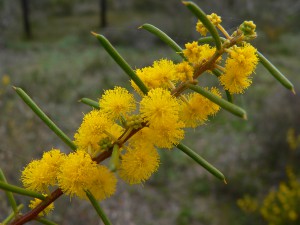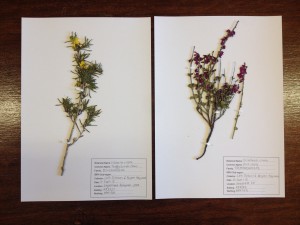Eaglehawk Waterhole update – Part 1: Winter planting and wildflower event
It’s been a little while since the last Eaglehawk Restoration Reserve update – but there has plenty going on! So much so that we will need a few blog posts to cover everything, so we hope you enjoy this series over the next few weeks.
In late winter NGT staff planted about 900 plants across a two hectare area (see previous blog entry here), and in order to give these plants the best chance of survival follow up waterings took place in August at the time of planting, and a couple of months later in October. Although somewhat time consuming this measure has proved worthwhile as we currently have about a 95% survival rate! At least one watering will occur over the summer to ensure survival remains high. Meanwhile, NRSE’s Landscape Links project saw 3300 seedlings planted at Eaglehawk, with the majority of the work done by a group of eight American students spending part of their summer break in Australia with International Student Volunteers.
In addition to revegetation work, a small landscape garden was planted around the entrance gate area of the property in August. As well as simply beautifying the entrance, this part of the property will showcase several interesting and/or threatened species from the region. Jumping-Jack Wattle (Acacia enterocarpa – federal and state listed as endangered), Three-nerved Wattle (Acacia trineura – endangered in South Australia), and Cypress Pine (Callitris rhomboidea – vulnerable in the South East) are all doing well so far.
September saw lots of activity in the Bangham area with about 20 people taking part in a wildflower weekend early in the month, covering Eaglehawk, and Bangham and Geegeela Conservation Parks. The wet weather didn’t dampen spirits too much and several previously unrecorded species were identified added to the Geegeela Conservation Park plant list.
Work also began on collecting specimens for an Eaglehawk-specific herbarium. A herbarium is “a systematically arranged collection of dried plants” which may be used as a reference resource. The NGT office already houses two large collections of species from the South East, one of which was kindly donated to Bryan by John Samuel White, a local naturalist from Bordertown. The production of an Eaglehawk herbarium will be an ongoing task over the coming years, and the collection may be used to help others identify specimens, or in educational or engagement settings.
While there is an incredible diversity of flora at Eaglehawk, there are of course undesirable species present – catch our update on weed control and insect surveys at Eaglehawk next week.



